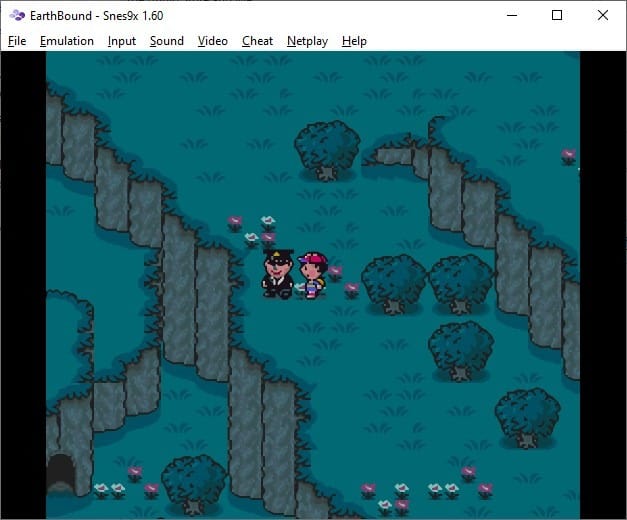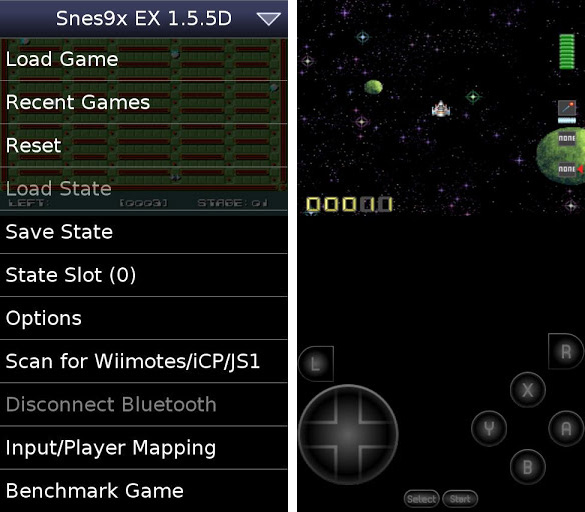
The scaling mode can be selected and aspect-ratio correction can be enabled via the “Settings” → “Output” menu. In the “Center” and “Scale” modes with aspect-ratio correction enabled, aspect ratio is precisely 4:3 (≈1.333) by default. Precise aspect ratio in the “Center” and “Scale” modes 4:3 instead of 64:49
#BSNES VS SNES9X FREE#
Pixel-perfect scaling on both axes is free of this issue. ripple effect, or jitter), when in-game objects are moving horizontally. This results in so called pixel shimmering (a.k.a. The horizontal scaling ratio is typically fractional for the purpose of achieving a precise aspect ratio.īut at fractional scaling ratios with blur disabled, different pixels in the same line have different sizes. The “Center” mode available in both bsnes-mt and original bsnes, with aspect-ratio correction enabled, only uses integer-ratio scaling vertically. The “Center” mode is only pixel-perfect vertically PPU mode can be changed via the “Fast mode” checkbox in the “PPU (video)” section of the “Settings” → “Enhancements” window. Otherwise the double 512×448 resolution is always used, that may cause screen space to be used less entirely and aspect ratio to be less accurate. It’s recommended to use the fast mode of PPU (enabled by default). Racing” where menus are rendered at 512×448. An example of a game that uses a high-resolution (HiRes) mode is “R.P.M. Pixel-perfect scaling is supported for both standard resolutions 256×224 and 256x240 and high (double) resolutions such as 512×448 and 512×224. Both standard and double resolutions are supported Least suitable for integer scaling of SNES games are Full HD (1920×1080) displays: just 83% of the screen height are used, and aspect-ratio error is greater than 7% and is noticeable visually. Aspect-ratio error on 4K monitors is within 5% and almost unnoticeable. The aspect ratio on QHD and 5K monitors is perfect. On QHD, 4K and 5K monitors, 93% of the screen height are used. With aspect-ratio correction enabled, the actual aspect ratio might be different from the perfect 4:3.Īt the regular 256×224 resolution used in the absolute majority of SNES games, the most accurate aspect ratio and maximum screen-space usage are achieved with monitors with the QHD (2560×1440), 4K (3840×2160) and 5K (5120×2880) resolutions. Aspect-ratio accuracy and screen-space usage It can be enabled or disabled via the “Settings” → “Output” menu. Thanks to this, all pixels have exactly the same size, so there is no pixel shimmering. The new “Pixel-Perfect” mode does integer-ratio scaling both vertically and horizontally, even with aspect-ratio correction enabled. Pixel-perfect integer-ratio scaling on both axes

#BSNES VS SNES9X DRIVERS#


Built-in hotkeys for common actions such as switching to full-screen ( F11, Alt+ Enter) and pseudo-full-screen ( Shift+ Enter) modes, or taking a screenshot ( F9, PrintScreen) closing the app with Alt+ F4 works in full-screen mode.Saving screenshots in the compressed PNG format instead of uncompressed BMP.

Precise aspect ratio of 4:3 instead of 64:49 with correction enabled, in the “Center” and “Scale” modes.integer scaling) both vertically and horizontally. Pixel-perfect integer-ratio scaling (a.k.a.Pixel-perfect scaling, PNG screenshots, built-in hotkeys, better usability, and more. Bsnes-mt is an improved version of bsnes - an accurate emulator of the 16-bit game console SNES (Super Nintendo).


 0 kommentar(er)
0 kommentar(er)
